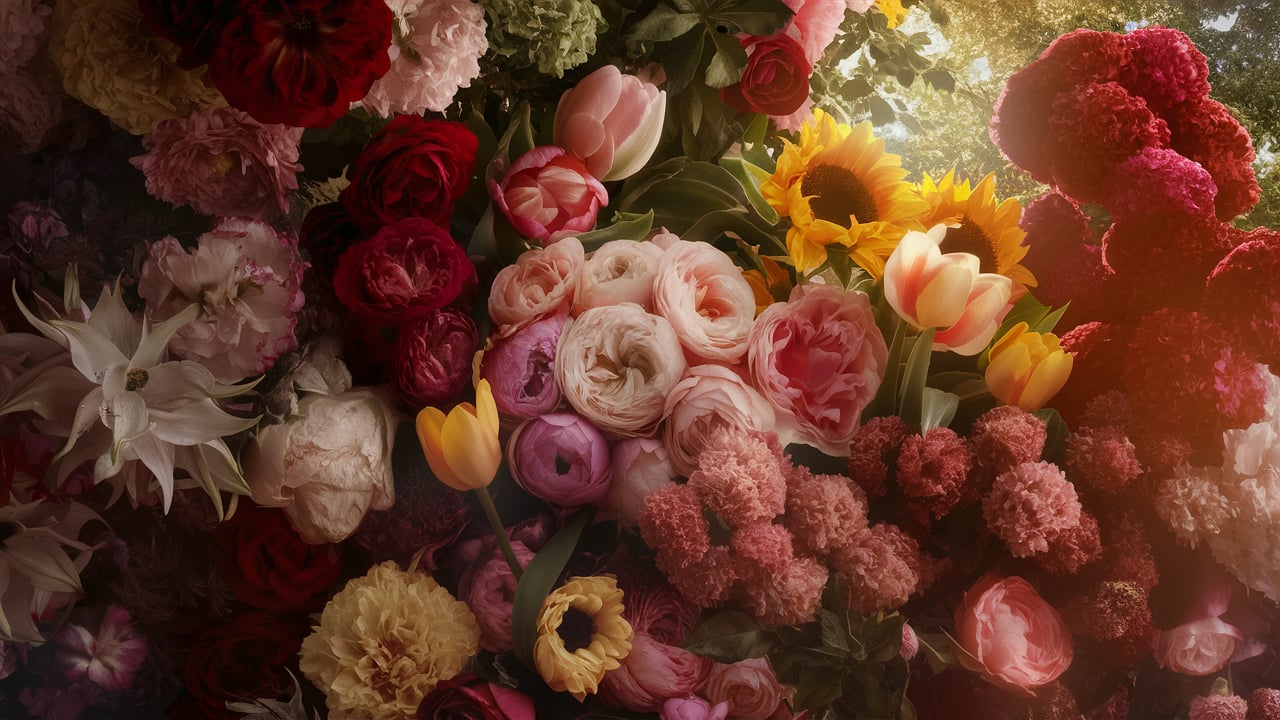Introduction to beautiful:by5oj2_qmci= flowers
Flowers have long been a source of beauty and inspiration. But did you know they also speak their own language? The Language of Flowers is an enchanting world where each bloom carries its unique meaning, transforming simple gestures into heartfelt messages. Imagine gifting someone a bouquet that not only dazzles the eyes but also conveys emotions and sentiments without uttering a single word.
Whether you’re expressing love, gratitude, or sympathy, flowers can help you articulate feelings in ways that words sometimes cannot capture. Dive into this captivating realm with us as we explore beautiful:by5oj2_qmci= flowers—discover their rich history, meanings, and how to weave these floral symbols into your everyday life.
History and Origins of Flower Meanings
The history of flower meanings is as vibrant as the blooms themselves. For centuries, cultures around the world have attributed specific significance to various flowers. This practice dates back to ancient civilizations such as the Egyptians and Greeks.
In Victorian England, a blossoming interest in floral symbolism emerged. People began sending secret messages through bouquets, known as floriography. Each flower conveyed emotions that words could not express—like passion or friendship.
Flowers like roses became icons of romance, while daisies symbolized innocence. The language evolved over time, adapting to societal changes and personal sentiments.
Today, these meanings still resonate deeply in our lives. Whether it’s a wedding bouquet or a simple gift for a friend, understanding their origins enriches our appreciation of nature’s beauty and complexity.
Popular Flowers and Their Meanings
Roses are perhaps the most iconic flowers, symbolizing love and passion. Each color carries its own meaning; red for deep love, white for purity, and yellow for friendship.
Lilies convey a sense of elegance and beauty. They often represent renewal and transience, making them perfect for celebrations or memorials.
Sunflowers stand tall with their bright yellow blooms. They symbolize adoration and loyalty, radiating warmth just like the sun they resemble.
Daisies offer a fresh take on innocence and new beginnings. Their simple petals remind us to appreciate life’s little joys.
Forget-me-nots carry profound significance as symbols of remembrance and true love. These delicate blue flowers evoke feelings of nostalgia and connection.
Each flower tells its own story through vibrant colors and unique shapes, inviting us to express emotions that words sometimes cannot capture.
How to Use the Language of Flowers in Everyday Life
Incorporating the language of flowers into daily life can add a touch of meaningfulness to ordinary moments. When gifting a bouquet, consider the specific flower types and their meanings. A single rose conveys love, while daisies symbolize innocence.
You can also use flowers in personal spaces. Place lavender on your desk for calmness or sunflowers in your kitchen to evoke happiness.
Sending floral-themed cards with messages related to the blooms enhances connections with loved ones. A thoughtful note alongside symbolic flowers creates an emotional impact.
Another creative approach is crafting floral arrangements for various occasions—birthdays, anniversaries, or simply as a gesture of gratitude. Tailoring each arrangement based on flower meanings enriches their purpose and sentiment.
Engage children by teaching them about different flowers and their symbolism through fun activities like creating art projects centered around blossoms they learn about together.
The Benefits of Giving and Receiving Flowers
Giving and receiving flowers brings joy that transcends words. A simple bouquet can light up a room and uplift spirits instantly.
Flowers create emotional connections. They communicate feelings when words might fall short, such as love, sympathy, or gratitude. Each bloom carries its own message, making gifts thoughtful and intentional.
Science also backs the happiness factor. Studies show that s improve mood and reduce stress levels. The vibrant colors and sweet fragrances stimulate our senses in delightful ways.
For the giver, presenting is an act of kindness that enhances relationships. It fosters bonds between friends, family members, and partners alike.
Receiving blooms can evoke cherished memories or inspire new ones. Every petal tells a story—one filled with affection and appreciation for life’s special moments.
Unique Ways to Incorporate Floral Symbols into Special Occasions
Floral symbols can add a touch of elegance and meaning to any special occasion. Consider using flowers as part of your table settings. For instance, place small arrangements that represent the significance of each flower next to guests’ plates.
Weddings offer countless opportunities for floral symbolism. Choose blooms that reflect love, fidelity, or new beginnings in your bouquet and centerpieces. You might even have guests write messages on petals instead of traditional guestbooks.
For birthdays or anniversaries, gift a bouquet with specific meanings tied to shared memories between you and the recipient. This personal touch elevates an ordinary gift into something profoundly thoughtful.
Don’t forget about party favors! Create sachets filled with dried flowers representing happiness or joy—and watch your guests leave with beautiful reminders long after the celebration ends.
Conclusion: Embracing the Beauty and Symbolism of Flowers
\Flowers have long been a source of beauty and inspiration. Their vibrant colors and delicate fragrances evoke emotions that words sometimes cannot express. The Language of Flowers: beautiful:by5oj2_qmci= flowers invites us to explore the stories each bloom tells.
As we dive into this enchanting world, we uncover layers of meaning in every petal. From romantic gestures to heartfelt apologies, flowers speak volumes about our feelings and intentions. Incorporating their symbolism into daily life can transform ordinary moments into extraordinary experiences.
Whether you’re celebrating love or offering comfort during difficult times, understanding flower meanings enriches those interactions. Sending a bouquet with intention creates connections that resonate deeply.
By embracing the art of floral communication, we not only enhance our relationships but also cultivate an appreciation for nature’s artistry. Each arrangement becomes a reflection of our thoughts and emotions—a reminder that even simple gestures can hold profound significance.
So next time you encounter a flower, take a moment to recognize its hidden message. Engage with the beauty around you and let it inspire your own expressions—because in every blossom lies both poetry and passion waiting to be shared.



